Team:UNITN-Trento/Art
From 2012.igem.org
Art & Science
As a way to validate the usefulness of our method and how it would have an impact on the art of stones restoration and conservation, we have taken steps to introduce experts in the field to our new approach.
We have interviewed:
- Flavio Deflorian, a professor in material engineering, who also works in stone restoration
- The Passamani brothers, who are a geologist and a restorer
INTERVIEW WITH FLAVIO DEFLORIAN, PROFESSOR IN MATERIALS ENGINEERING.
On September 6th prof. Deflorian was our special guest in the lab. He teaches “Scienza e tecnologia dei materiali” (Science and material technologies) at the faculty of Engineering in Trento, and helped us with very useful advices and information. After a good lunch at “Oro Stube” (the restaurant which sponsors us for the t-shirts!) we went with him to the lab, where we briefly explained him what our project is about and then interviewed him with some questions.
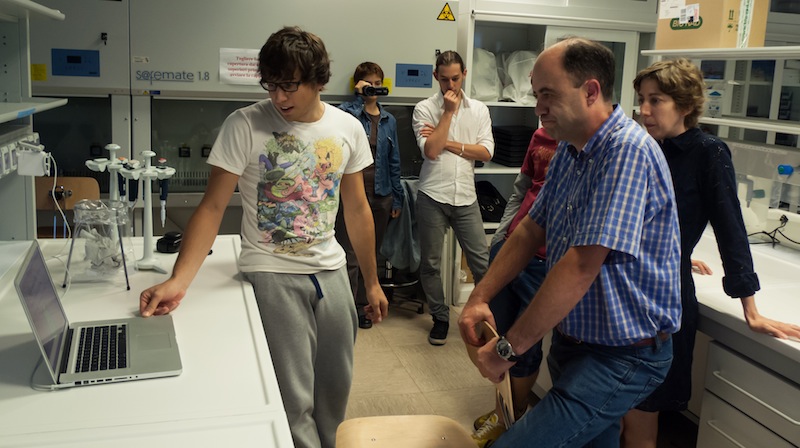
How would you define the “black crust” and what leads to its formation?
A lot of different kinds of black crust exist because many factors (environment, in general) contribute to its formation. But in any case there is always a sulphur component and a pH decrease (ex. acid rain). Inside the crust everything can be trapped by gypsum; for example, before the advent of “green fuel” lead was present in all types of fuels. Today we have more strict rules on the pollutants and the levels that are considered acceptable in the air. Although, a decrease in air particulate has been registered in the last decade, it is still not enough to avoid the black crust problem.
Furthermore the problem is not the only one caused by the black crust. It means that there is also an higher absorption of light, which leads to a thermic dilatation effect that ruins the underlying marble.
Which are the modern techniques used to remove the black crust?
Almost all the restoration methods are based on a mechanical approach. For this reason it is not simple remove only the superficial layer of crust, but you risk of damaging the underlying calcareous matrix. There are many examples of bad restoration: the whole surface becomes white, almost bleached, and this effect of total whitening is often (especially in Italy) less preferable of not intervening at all. The crust is of course a negative effect, but from another point of view it maintains an “historical aura” all around the building. So in restoration a gradual approach is always fundamental.
How much does it cost a good restoration?
The economic component is not negligible: to restore you need materials, people, time whose cost increases exponentially based on the final quality that you want to obtain.
How long does a good restoration last?
It is difficult to answer. Usually people are satisfied if it lasts for about a decade; maybe an operation on an important masterpiece should last a bit more.
Are the techniques used on important masterpieces different from those used on common marble pieces?
No, because the known techniques are always the same. The differences are qualitative: when you work on a piece that has many small details you pay much more attention during the work, and you need professionals and time to obtain a good result
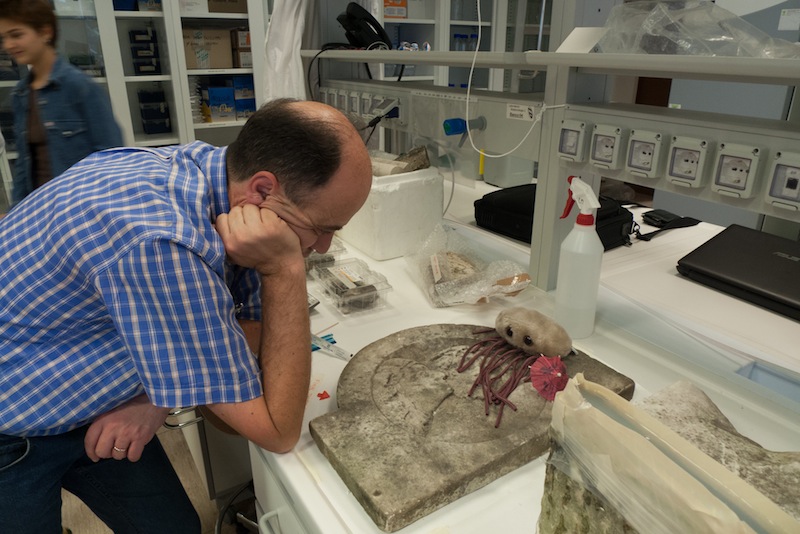
After all this useful information, do you think our biological method could be a valid alternative to solve the problem of the black crust?
Yes, in particular I can highlight two strengths of your system: it is selective, allowing to operate only on the gypsum matrix and not on the marble surface, and it is easy to apply; everyone could spread a sort of gel on a marble piece, and this means that your system is also cheap because you save to pay an expert in the field for the application.
In your opinion, what people could think about our project?
The common man’s opinion is of course different from that of an expert in this field; I am sure that restorer will be happy to use your product without problems after it is off the shell. So there is a basic conservatism but it must not be made absolute. What it would be interesting also it is to have a biological system that protects the statues from the chemical pollutants. Dr. Deflorian also looked at our Crustonator and at our black crust samples. We were happy that he confirmed that what came out of our Crustonator it is indeed Black crust. We are now ready to clean it with our bacteria! Thank you Dr. Deflorian, we will always remember this pleasant afternoon spent together.
MEETING WITH THE PASSAMANI BROTHERS
On 13th September some of us went to visit the work place of an original local artist Claudio Passamani (actually Claudio’s job is to cut and restore stones, but he enjoys creating funny sculptures in his free time). When we arrived the meeting became a double meeting, because also a geologist (Stefano) was waiting for us. It was a beautiful experience to learn about stones, their characteristics and their origins.
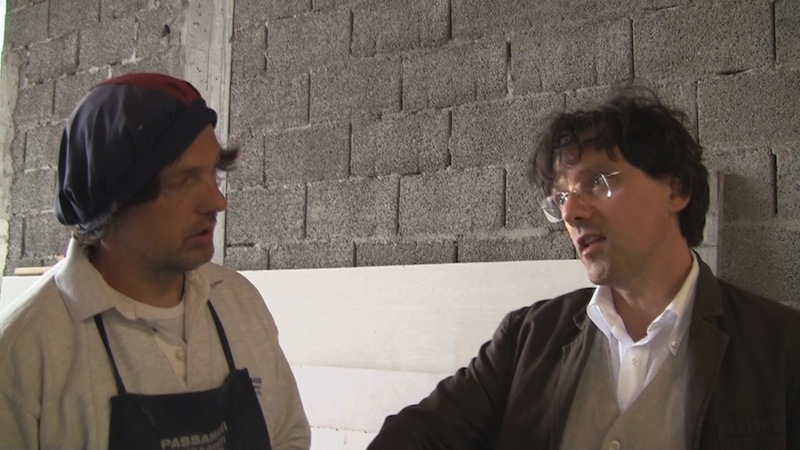
MANY TYPES OF STONES
The studio was full of stone pieces of any kind and dimension. Some came from far away (Carrara marble, Red Portugal, Absolute Black from Belgium) some from local caves (The absolute white from Lasa, a small town in the area at 2000 mt above sea level, Yellow from Mori, The stone from Lessinia). Some had organogenic origins, some were sandstones; some were colourful, some smelt of fish; some had been at the open air for years, and it was easy for us to recognize thick covering layers of black crust. After a first introduction to the “stone world” we moved inside: what a mess! Even inside there were stones everywhere, but the room was also full of dust, machines and tools. Claudio showed us his masterpieces, and told us that some were made with hot glue. Wow, the effect is beautiful!
THE DANGEROUS CHEMICALS A RESTORER MUST USE
We asked Claudio to show us how he cleans his stones before he shape them. The tool he mostly uses is the hydrojet cleaning system. This system can be used efficiently on large surfaces.
When you need to clean small and delicate details you have to use chemical agents, as he explained us. In a day or so after the application you are able to see the result… but you are also able to obtain a melted brush! He opened a big cupboard and it was full of chemicals. We looked at the labels and we were shocked to see that they contain caustic soda or nitric acid. How many wasted brushes to clean his pieces!!
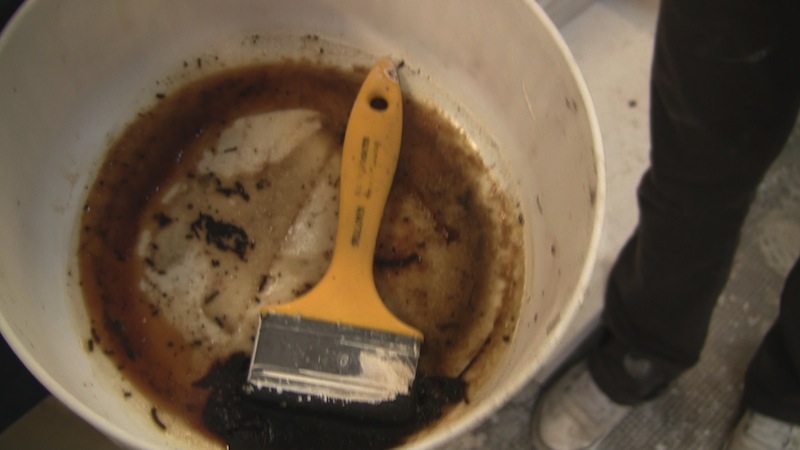
BLACK CRUSTS ARE NOT ALWAYS BAD
At the end of the visit we also went with Claudio and Stefano to the near cemetery to observe the renovation of a couple of statues he did in the last months. He also stopped by a big Angel that he was asked once to clean. He told us that he refused to clean the statue because in this case the black crust highlights the small details of the piece, making it even more beautiful than its original status.
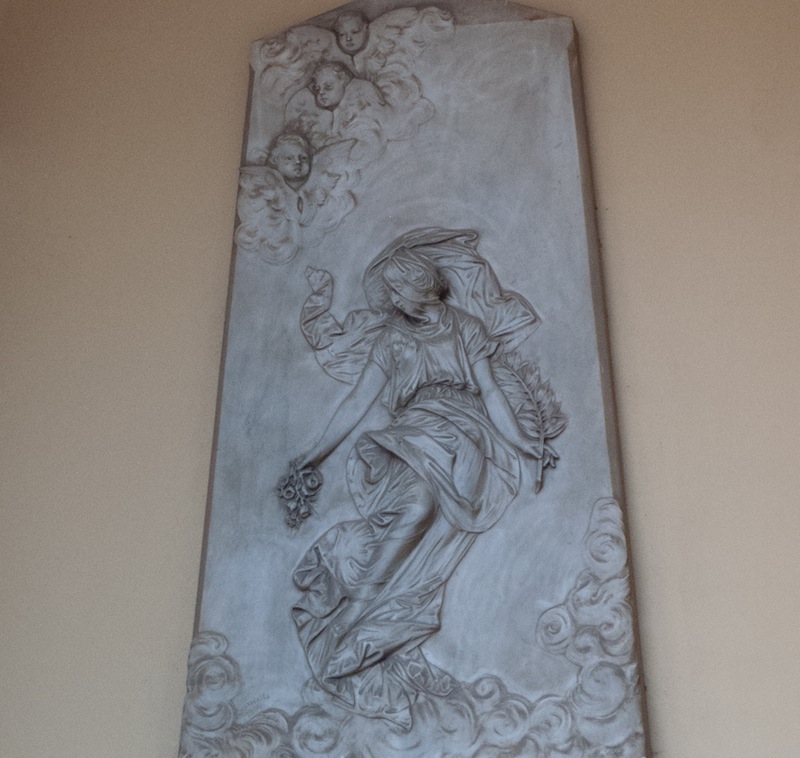
We were so fascinated with their stories and their knowledge on marble that we lost completely connection with the outside world. Time flies fast into an artist studio and when we soon realized that it was time to go and did not ask him the questions we came with. We left anyway happy with all the new information gathered and our tombstone to clean! We will let Claudio know how it goes.
 "
"








